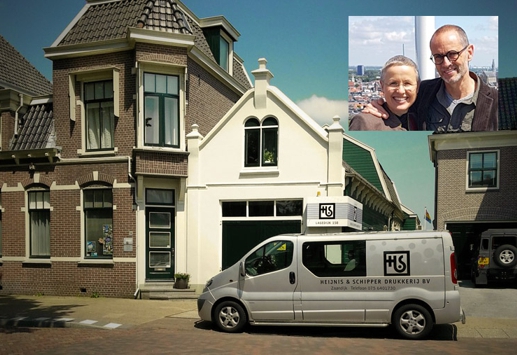WHERE AND WHEN?
I've
tried to provide an answer to these questions on the previous pages. It's very
probable that this deck was originally created in the Netherlands, but where
exactly will remain unknown. Holland became a kingdom for the first time in 1806
under King Louis Napoleon. This Kingdom of Holland only existed for a short
while. It ended it 1810 when Holland was incorporated in the French Empire under
Napoleon Bonaparte. After his defeat at Waterloo the Netherlands regained their sovereignty
in 1813. William Frederic, son of the last stadhouder, was
appointed as sovereign ruler and in 1814 the first Constitution was recorded.
It wasn't until the Vienna Congress in 1815 that the Northern and Southern
Netherlands were officially united and recognized as the Kingdom of the
Netherlands.
I mention this chronology, because I suspect the artist of having entered some
Dutch elements in this deck to celebrate a (regained) sovereignty. The first
Kingdom of Holland was still too much under French influence, which makes it
more probable that de deck was made after 1815. This is reasonably supported by
the other findings about paper, uniform and fashion. Hence my (conservative)
dating of 1815/1820.
THE PRINTING
Because
all the original cards have small differences in height and width and some have
a drawn outline while others have not, I've decided to skip the white borders
and just have the scenes printed on the cards, from side to side, so without new
borders. To establish that the designs had to be adjusted to one size. In the
end the format of 64 x 95 mm appeared to bring the best solution and all cards
could be copied on a 1-to-1 scale. During this process I've also removed a small
spot from three cards.
 |
Because all the files were
made in this format of 64 x 95 mm. the cards had to be cut very
accurately to get the exact same size. At first the expertise of
Cartamundi was sought, but -besides the poor communication- in the end
they could not deliver the accuracy that was promised at the intake. So
it was sad, but this project had to be cancelled there.
The deck has now been printed
by Heijnis & Schipper Drukkerij in Zaandijk (NL), where Marjolein and
Maurice have committed themselves to this special project full of
enthusiasm. Their dedication is reflected in the finishing touch of this
deck. |
| Besides the 150 decks
there are also 10 numbered sets of 4 sheets each, on which the cards are
printed per suit. They can be ordered here too. |
A FINAL REMARK
Transformation
decks are not really made to be played with. The first "cards"
appeared in Germany in a "Taschenbuch für 1801" as 16 illustrations
for the rhyme verse Hudibras by Samuel Butler. There were only 16 cards, so not
a complete deck in any way. There are other examples from the very early
beginning of the 19th century, that show a limited number of cards as
illustrations or uncut sheets. The first complete deck was published in Germany
in 1805. Not long after more decks of this kind appeared in England and America..
Only about 50 of these transformation decks from the 19th century are known. In
Belgium the Daveluy company from Bruges has published a transformed deck around
1870. But also in the beginning of the 20th century transformation decks have
still been published. It has taken a few decades but modern artist have
rediscovered this type of playing cards since the 1970's and some fine examples
have been published until the present day. In 1983 the American collector Albert
Field has described all the then existing transformation decks in a book and of
each deck all cards were shown. Since then no new 19th century
transformation decks have been found. So until now. But this deck has never been
printed...... until now.
You've seen a number of cards here from the very first Cotta deck from 1805.
Household scenes, lovely angels and here and there a reference to death. They
are in this deck too. But there are also a few cards with a more comical scene.
In France these kind of decks, called "jeux à cartes transformées",
often showed satirical scenes and therefore nicknamed "cartes à rire".
Cards to laugh about. I hope that after some 200 years these cards can still
bring a smile to your face.
Interested
to see the complete deck? It was the Deck of the Month in September 2019:
http://www.dxpo-playingcards.com/xpo/deck-month/pages/deck-month-19.htm
and press 09
or
you can order one now.
Joop
Muller,
15/09/2019
-1-
-2- -3-
-4- -5- -6-
-7-
DXPOHOME
